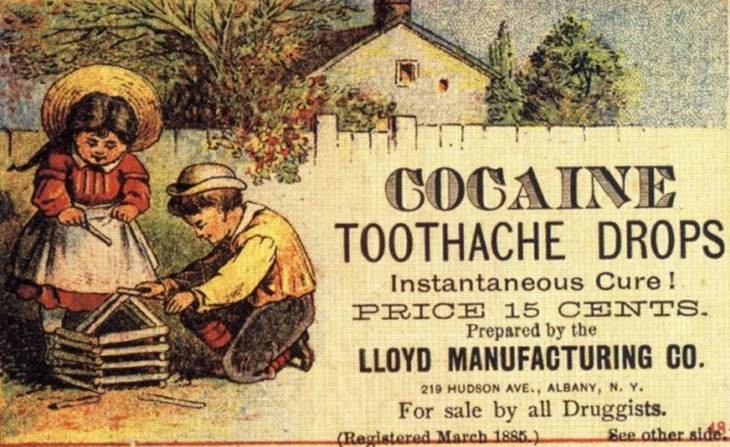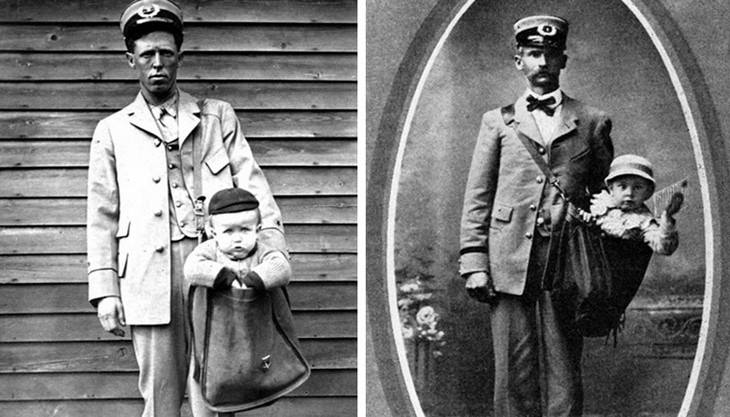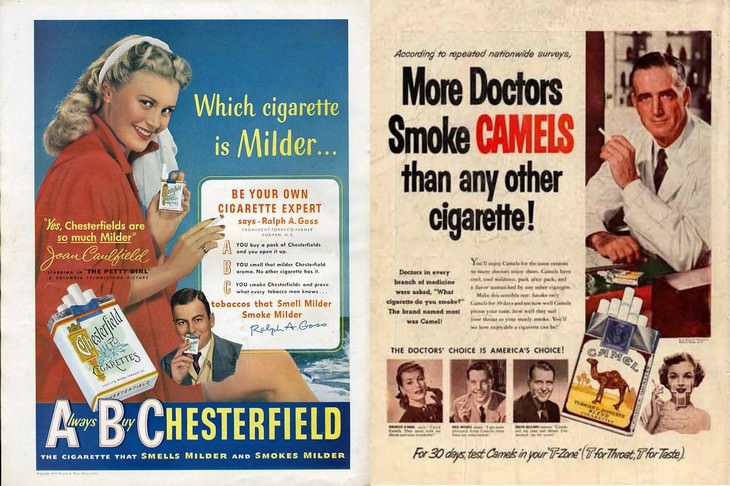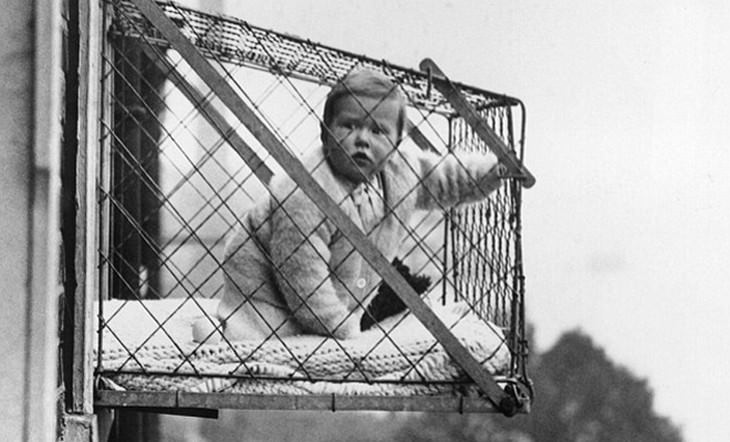1. Cocaine Treatment
At the beginning of the 20th century, cocaine was not seen as a dangerous addictive substance, but a medicine. It was used as a painkiller and anesthetic, and also recreationally to improve health and vitality. Cocaine enjoyed such a wave of popularity at the end of the 19th and the turn of the 20th century that the negative effects of it were largely overlooked.
It all began with European explorers and colonists in South America who noted the indigenous custom to chew on coca leaves. The European adopted the custom, and word about the coca leaves’ ability to waive off exhaustion and hunger spread to Europe. Scientists of the 19th century eventually extracted pure cocaine out of the plant, in the form of a white crystalline substance that was tens to hundreds of times more powerful than munching on a coca leaf.
The cocaine fad soon reached the US and was endorsed by prominent figures, like the pioneer surgeon William Stewart Halsted and Sigmund Freud. As cases of devastating addiction and health damage (including the life stories of Halsted and Freud) started being connected to cocaine use, the drug fell out of public favor. It was finally outlawed in 1914.
2. Sending Children Through the Mail
Sending and receiving parcels seems like an obvious thing to us now, but it was actually a life-changing innovation at the beginning of the 20th century. When the Post Office Parcel Post was introduced in January 1913, it gave millions of Americans access to all kinds of goods and services they didn’t have before. But it also had one unintended and surprising consequence - some parents tried to send their children through the mail.
Just a few weeks after Parcel Post began, an Ohio couple sent their 8-month-old baby James to his grandmother, who lived just a few miles away. Baby James weighed just under the 11-pound limit on parcels and his delivery cost his parents only 15 cents, cheaper than a train ticket. The story made headlines, and for several years, similar stories would pop up about children being passed as mail in rural areas, with stamps attached to their clothes.
According to the Smithsonian, what might seem like negligence to the modern reader is actually an indication of how much rural communities relied on and trusted mail carriers.
3. Smoking During Pregnancy
Smoking was heavily marketed to both women and doctors during the 1940s and 1950s. The common recommendation was that pregnant women limit their smoking to 4 cigarettes a day, but certainly not quit altogether. Some doctors even encouraged women to smoke during pregnancy in order to “calm their nerves”. ‘Hysteria’ and ‘neurosis’ were believed to be more harmful than cigarette smoke.
Cigarette brands even used doctor endorsement and declarations, such as “noted throat specialists concluded that not one case of throat irritation was due to smoking Camels!” It was only with the publication of Surgeon General’s Report on the link between smoking and lung cancer in 1964 that the public opinion on smoking started to gradually change.
4. Outdoor Baby Cages
The dangling baby cages were invented in 1922 and were especially fashionable in the 1930s. But it all actually began with an 1884 book 'The Care and Feeding of Children' by Dr. Luther Emmett. In his book, Emmett strongly recommends that babies need to be "aired" to "renew and purify the blood."
But not every mom had a garden or a terrace at her disposal, especially not the city-dwelling moms. And so it became an ordinary sight in London and the US to see chicken-coop like cages installed on windows, for infants to relax in. The popularity of baby cages declined by the end of the 1940s, possibly due to safety concerns.
5. Ragamuffin Day AKA Thanksgiving
Up until the 1930s, people used to dress up, run around the streets, and go to costume parties... on Thanksgiving. Basically, Thanksgiving was the early version of Halloween. According to a Los Angeles Times article from November 21, 1987, Thanksgiving was "the busiest time of the year for the manufacturers of and dealers in masks and false faces."
It was a popular custom for kids to dress up in rags and exaggerated beggar costumes and ask the neighbors or adults on the street if they had ‘Anything for Thanksgiving’. In response, the kids usually received pennies, an apple, or a piece of candy. It was called the Ragamuffin Parade, after the raggedy costumes. By 1930, some New Yorkers decided they had enough and deemed the celebration 'incompatible with modernity’.
School Superintendent William J. O'Shea even claimed the habit of ‘annoying adults’ by asking for gifts must stop. However, the door-to-door looking for candy didn’t really disappear rather it became a Halloween tradition. Some of the original Thanksgiving spirit is still alive... through the annual Macy’s Thanksgiving Parade.
6. Radioactive Toys
Children of the 1950s had access to probably the most dangerous play-kit ever. The Gilbert U-238 Atomic Energy Lab was only sold between 1951 and 1952 and had a heavy price tag of $50. It contained four different types of uranium ore, a Geiger counter, a miniature cloud chamber, an electroscope, a spinthariscope, and an educational comic book called “Learn How Dagwood Splits the Atom!”.
Yes, all the materials were real. Kids could conduct their own experiments at home and discover the secrets of radioactive materials. The kit even included a government manual, claiming to help kids discover new sources of uranium and be rewarded $10,000 from the US government. The kit is a much sought after collector’s item today and complete sets can sell for more than 100 times the initial cost.
7. The "Ugly Law"
This may sound like a premise for an apocalyptic movie, but it was, in fact, a very real law that somehow stayed in the books in Chicago for 93 years, according to the Chicago Tribune. In 1881, Chicago alderman James Preevey made it his mission to “rid the city of all street obstructions.”
And by 'obstructions' Preevey meant beggars and the disabled. The official law, which was passed in May of that year, banned anyone who was “diseased, maimed, mutilated, or in any way deformed” from being in the public eye. Beggars could be fined between $1 and $50 (a hefty sum in those days) for ‘breaking’ the law. It continued to be enforced until World War I when public opinion towards the disabled shifted dramatically when veterans started to return home with missing limbs and other battle scars.
8. Hiring a Garden Hermit








